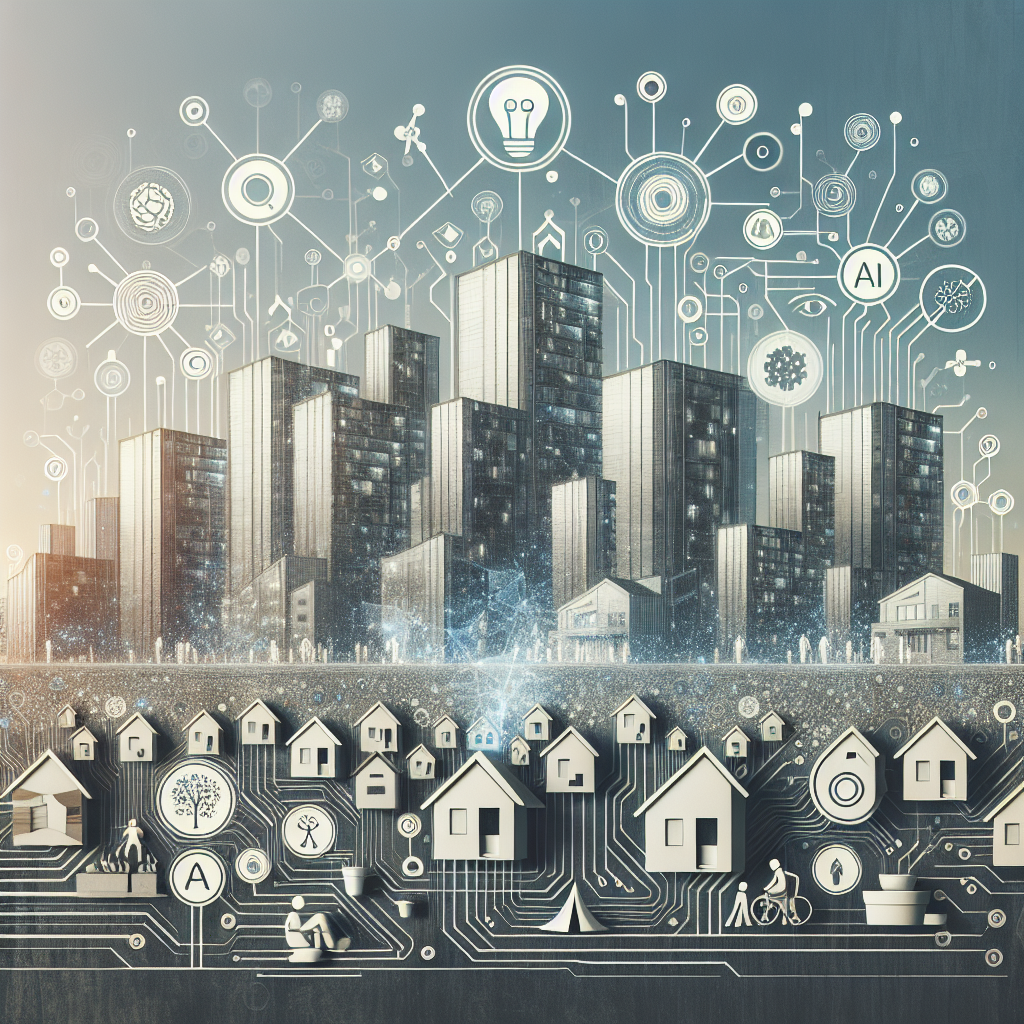Introduction
In recent years, the use of artificial intelligence (AI) in various industries has grown significantly. One area where AI has shown great potential is in public housing and homelessness programs. AI technology can help streamline processes, improve data analysis, and ultimately, better serve individuals and families in need. In this article, we will explore the use of AI in public housing and homelessness programs, its benefits, challenges, and potential future applications.
Benefits of AI in Public Housing and Homelessness Programs
1. Improved Data Analysis: AI technology can process large amounts of data quickly and accurately, allowing housing agencies to analyze trends, identify patterns, and make more informed decisions. This can help agencies better understand the needs of individuals experiencing homelessness and tailor services to meet those needs.
2. Streamlined Processes: AI can automate repetitive tasks, such as data entry and paperwork processing, freeing up staff to focus on more important tasks, such as providing direct services to clients. This can help agencies operate more efficiently and serve more individuals in need.
3. Predictive Analytics: AI can be used to predict future housing needs based on current trends and data. This can help agencies allocate resources more effectively and proactively address homelessness before it becomes a crisis.
4. Personalized Services: AI can analyze individual data and preferences to provide personalized recommendations and services to clients. This can help agencies better meet the unique needs of each individual and improve outcomes.
Challenges of AI in Public Housing and Homelessness Programs
1. Privacy Concerns: AI technology relies on large amounts of data, raising concerns about privacy and data security. Housing agencies must ensure that they are collecting, storing, and using data responsibly and in compliance with relevant laws and regulations.
2. Bias and Discrimination: AI algorithms can inadvertently perpetuate bias and discrimination if they are not designed and tested properly. Housing agencies must be vigilant in monitoring and addressing bias in their AI systems to ensure fair and equitable outcomes for all clients.
3. Cost: Implementing AI technology can be expensive, requiring agencies to invest in infrastructure, training, and ongoing maintenance. Housing agencies must weigh the costs and benefits of AI technology and ensure that it aligns with their mission and goals.
4. Lack of Technical Expertise: AI technology is complex and constantly evolving, requiring specialized knowledge and skills to implement and maintain. Housing agencies may need to invest in training and hiring experts to effectively leverage AI technology.
Future Applications of AI in Public Housing and Homelessness Programs
1. Virtual Assistants: AI-powered virtual assistants can help individuals navigate the housing system, access resources, and find housing options that meet their needs. Virtual assistants can provide information, support, and guidance in a convenient and accessible way.
2. Predictive Modeling: AI can be used to predict housing trends, identify at-risk populations, and allocate resources more effectively. By leveraging predictive modeling, housing agencies can proactively address homelessness and reduce the number of individuals experiencing housing instability.
3. Smart Homes: AI technology can be integrated into housing units to monitor and adjust energy usage, improve safety and security, and enhance overall quality of life. Smart homes can help individuals experiencing homelessness transition to stable housing and maintain their independence.
FAQs
1. How is AI being used in public housing and homelessness programs?
AI is being used in public housing and homelessness programs to improve data analysis, streamline processes, predict housing needs, and provide personalized services to clients.
2. What are the benefits of using AI in public housing and homelessness programs?
The benefits of using AI in public housing and homelessness programs include improved data analysis, streamlined processes, predictive analytics, and personalized services for clients.
3. What are the challenges of using AI in public housing and homelessness programs?
The challenges of using AI in public housing and homelessness programs include privacy concerns, bias and discrimination, cost, and lack of technical expertise.
4. What are some future applications of AI in public housing and homelessness programs?
Some future applications of AI in public housing and homelessness programs include virtual assistants, predictive modeling, and smart homes to improve service delivery and outcomes for individuals experiencing homelessness.
Conclusion
The use of AI in public housing and homelessness programs holds great promise for improving service delivery, outcomes, and efficiency. By leveraging AI technology, housing agencies can better understand and address the needs of individuals experiencing homelessness, allocate resources more effectively, and provide personalized services that meet the unique needs of each client. While there are challenges to overcome, the potential benefits of AI in public housing and homelessness programs are significant and warrant further exploration and investment.

